
Australian operated

Australian operated
Free on-site visit & quote
Over 14,000+ homes protected
5/5 stars is most frequent rating
Termite inspections and treatments are often the most effective way of detecting and removing active termite infestations within a property, however, termite bait systems can prevent infestations via early detection.
In fact, this is precisely how termite bait stations are designed to work.
They provide early detection and prevention of internal infestations over longer periods. This is why termite traps and baiting stations are an attractive option for many homeowners, as they function primarily as a preventative measure.

Termite bait stations do exactly what you’d imagine – their job is to attract and kill off termites. However, unlike other, more traditional forms of pest control and extermination methods, termite baiting stations are cleverly designed to work in conjunction with the natural behaviour of termites.
More importantly, they’re designed to not only kill termites active within the traps but also to eliminate the actual nest.
This is what makes termite bait stations really effective. Not only are they an affordable long-term solution, but they are incredibly effective at killing off large colonies of termites.
A termite bait system operates on the social nature of these pests. When foraging termites find the bait, they carry it back to their colony, effectively spreading the treatment throughout the nest. This means a single termite baiting station can impact thousands of termites, including the queen, resulting in colony elimination.
Do termite bait stations work? Research and practical application have shown they are highly effective when properly installed and maintained. Unlike chemical barriers that simply block entry, termite bait stations actively attract and eliminate the problem at its source.
As most property owners know, there are several different methods available for the treatment of termites. Options range from chemical treatments and termite barriers, through to physical barriers and, of course, baiting systems.
Aside from cost, typically it’s the property type that determines which type of treatment is most suited. For instance, because termite baits aren’t actually physically connected with a building or structure, they’re more commonly used on split-level or pole-built homes. This is due to the property being raised above the ground, where traditional barriers would be ineffective.
Termite bait stations themselves are approximately 30cm long in length and look like vented cylindrical tubing. Each termite trap is fitted with a lockable cap for safety, which contains small ventilation grills at the top. Termite baiting stations are buried down into the ground, with the very top of the trap sitting flush with the soil.
Traps are placed this way for the following reasons:
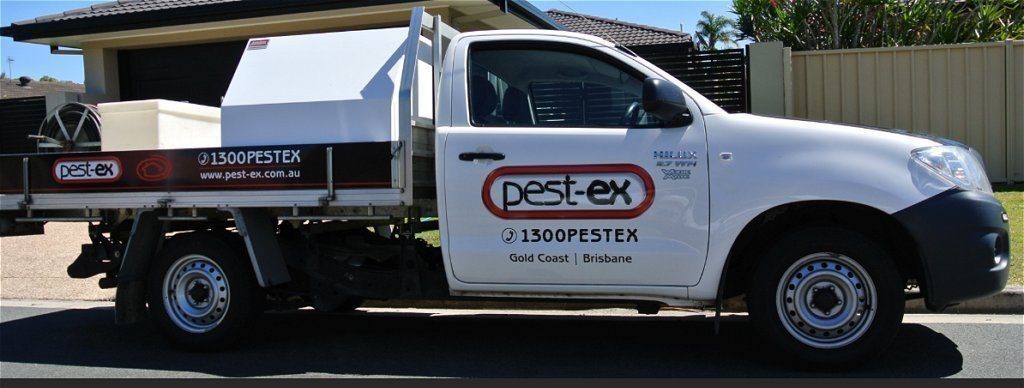
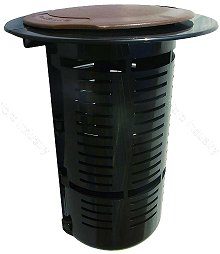 Termite baits themselves are approximately 30cm long in length, and look like vented cylindrical tubing. Each trap is fitted with a lockable cap for safety which contains small ventilation grills at the top. Termite bait stations are buried down into the ground, with the very top of the trap sitting flush with the soil.
Termite baits themselves are approximately 30cm long in length, and look like vented cylindrical tubing. Each trap is fitted with a lockable cap for safety which contains small ventilation grills at the top. Termite bait stations are buried down into the ground, with the very top of the trap sitting flush with the soil.
Traps are placed this way for the following reasons.
What makes termite baiting systems so highly effective is the fact that they’re actually part of a simple 3-step termite-killing process.
That process is as follows –
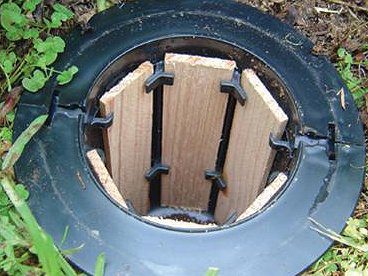
Obviously, the first part of the process is to attract any nearby termites to the termite bait stations. This is achieved by placing Tasmanian Oak timber into the traps, which termites consider an attractive food source. Timber has cellulose in it, which termites eat and digest, with the help of protozoa and microbes in their guts. However, some cellulose material is more attractive than others, with termites favouring Tasmanian Oak.
In addition to the timber, our pest control technicians add an attractant called Focus, which has the ability to draw termites in from distances of up to 3 metres away. Enough focus is added to last up to a month, which gives enough time for a large number of termites to become attracted to the termite trap. This method allows us to detect any early signs of termite activity around your property and prepare the next step of the process.
Once the traps have attracted a large amount of termites, they are then filled with an insect growth regulator called Hexaflumuron which destroys the termites exo-skeleton. Hexaflumuron takes on a pasty texture, once mixed with water (Hexaflumuron in its raw state is powder like)
Hexaflumuron contains cellulose, which again termites are attracted to as what they believe to be a viable food source.
Hexaflumuron once digested does 2 things –
Infection of the main colony or nest happens in two ways.
The final blow to the colony comes when the termites are unable to moult their exo-skeletons to make way for new growth. This of course means that that not only are existing termites eradicated, but also any future generations as they cannot reproduce.
As you can see, this is a highly effective method that once in place, works extremely well.

When it comes to baiting stations, customers typically sign up for 12 month contract. This provides the customer with –
Installation of a typical termite bait system for a standard 3 bedroom home, on a regular sized block can usually be completed within a day by a sole pest control technician. Usually the traps are set beneath the ground every 3 meters apart, strategically placed around the outer edge of the property. As the traps sit flush with the ground surface, they are virtually unnoticeable, which means no ugly boxes or obstructions in the yard.
Each month, customers receive an SMS notification or phone call to remind them that their inspections are due. It’s imperative that each termite bait station is inspected once a month to detect any potential activity.
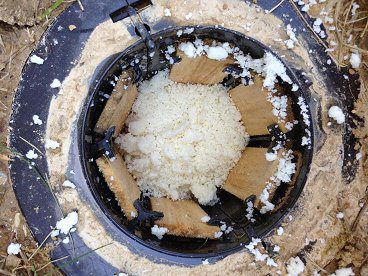 Upon inspection, we check the baits and fill in a service form, so that we know exactly the state of every trap on the property. In the second and third years, traps are usually checked every eight weeks. Continual vigilance is vital, as termite colonies are constantly moving through the ground, so it’s common for a home with a termite bait system to have three or four different hits a year, from a number of different termite colonies.
Upon inspection, we check the baits and fill in a service form, so that we know exactly the state of every trap on the property. In the second and third years, traps are usually checked every eight weeks. Continual vigilance is vital, as termite colonies are constantly moving through the ground, so it’s common for a home with a termite bait system to have three or four different hits a year, from a number of different termite colonies.
Termite bait systems can last for up to 10 years, making them an ideal investment for those who seek a viable long term, more permanent option.
In other words, termite baiting systems act as a long term “alarm system” for termites. If termites are actively feeding in the traps, it’s likely they’ve established a nest nearby, which allows us to take swift and immediate action.
Alternatively, if the baits continue to be clear, customers can rest easy knowing that their property will be safe from any potential infestations.
Termite baiting systems are often the preferred method of termite control for property owners who share concerns about the well-being and safety of their family, children and pets. As mentioned above, each station is locked with a secure cap and buried beneath the ground.
The baiting formula is harmless to animals and children, as well as wildlife, as it is only designed to harm insects with exo-skeletons. This type of controlled extermination is far more effective, and safe than a broad or blanket insect pesticide or deterrent.
Do termite bait stations work in all situations?
While termite bait stations are highly effective, they work best as part of a complete pest management strategy. For severe active infestations, immediate treatments might be needed alongside the baiting system. For ongoing protection, however, a termite baiting system provides excellent results.
How do termite bait stations work with existing structures?
The beauty of termite baiting stations is that they don’t require modification to your existing structure. They’re installed in the soil surrounding your property, creating a protective perimeter that intercepts foraging termites before they reach your home.
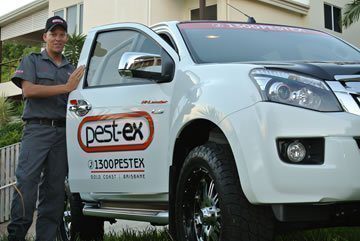 Ready to work with us?
Ready to work with us?For more information about our termite baiting systems, or to schedule a call to have one installed at your property, give us a call at Pest Ex. We’re proud of our track record as a leading pest control company in Queensland, servicing Brisbane, Logan and the Gold Coast regions.







